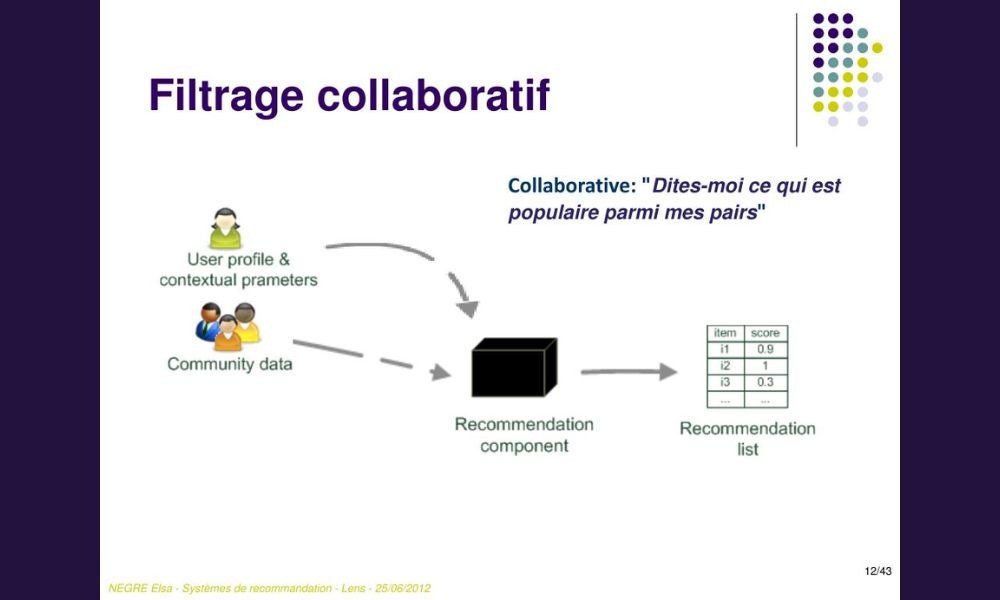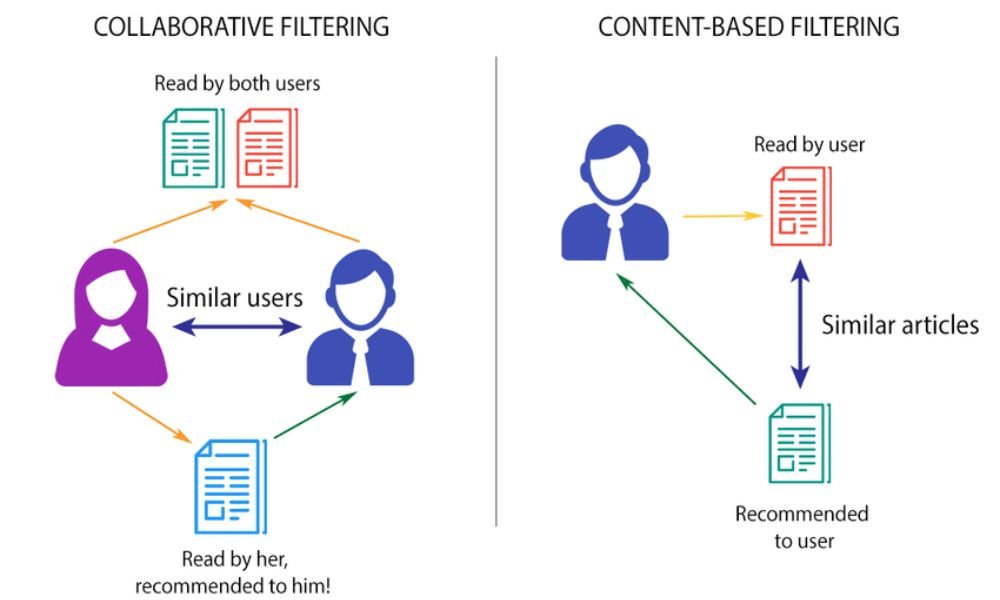Recommendation algorithms are mathematical formulas that make it possible to offer personalized content or products to users of a website or application . They are used by many digital players, such as e-commerce sites, online media, streaming services or social networks. In this article, we will explain to you how these algorithms work in practice and what are their advantages?
What is a recommendation algorithm and how does it work?

A recommendation algorithm is a computer program designed to analyze user data (such as their browsing history, preferences, purchases, etc.) and compare it to the characteristics of available content or products (such as price, color, gender, etc.). It then uses mathematical techniques to calculate a relevance score for each content or product and rank them in descending order. most relevant content or to users, in the form of suggestions, lists, banners, etc.
For example, if you watch videos on YouTube , the recommendation algorithm will analyze the videos that you have watched, liked or commented on, as well as those of other users with similar tastes to yours. It will then suggest videos that may interest you, based on their popularity, theme, duration, etc.
What are the main types of recommendation algorithms?

There are several types of recommendation algorithms , depending on how they use data. The main ones are:
Collaborative filtering

It is based on user interactions with content or products (such as ratings, reviews, clicks, etc.). It seeks to identify users with similar tastes and offer them content or products that they liked. For example, if you buy a book on Amazon , the collaborative filtering algorithm will suggest other books purchased by people who have purchased the same book as you.
Content-based filtering

It is based on the characteristics of the content or products (such as price, color, genre, etc.). It seeks to identify content or products similar to those that the user liked or searched for. For example, if you listen to a song on Spotify, the content-based algorithm will suggest other songs from the same artist, genre or style.
Matrix factorization

It is a mathematical technique that allows you to reduce the dimensionality of data and find hidden relationships between users and content or products. It seeks to predict the rating that a user would give to content or a product that they have not yet seen or purchased. For example, if you watch a movie on Netflix, the matrix factorization algorithm will estimate your liking of the movie based on your previous ratings and those of other users.
See also: Decryption of RNG: everything you need to know about the Random Number Generator!
Comparison table of the main types of recommendation algorithms
| Algorithm type | Benefits | Disadvantages |
| Collaborative filtering | Allows you to discover content or products appreciated by other users with similar tastes | Requires a lot of data to be effective, may be susceptible to bias or manipulation |
| Content-based filtering | Allows you to discover content or products similar to those that the user liked or searched for | May be limited by quality and quantity of available features, may lack diversity |
| Matrix factorization | Allows you to predict the rating that a user would give to content or a product that they have not yet seen or purchased | May be complex to implement and interpret, may require a lot of computational resources |
What are the advantages of recommendation algorithms?

Recommendation algorithms have several advantages for users and for the websites or applications that use them:
For users :
- They facilitate the discovery of content or products adapted to their needs and desires.
- They improve the user experience by making navigation smoother and more personalized.
- They increase user satisfaction and loyalty
For websites or apps:
- They increase traffic, time spent, conversion rate and revenue.
- They help build user loyalty by offering them personalized, quality service.
- They make it possible to manage a growing volume of data that is impossible to process manually.
- They allow you to differentiate yourself from the competition by offering added value.
What are the disadvantages or limitations of recommendation algorithms?

Recommendation algorithms are not perfect and may have certain drawbacks or limitations :
- The cold start problem:
It appears when there is insufficient or no data to make relevant recommendations . This may concern new users, new content or new products. For example, if you register on an e-commerce site, the recommendation algorithm will not be able to offer you products suited to your tastes until it has collected enough information about you.
The problem of diversity:
It arises when recommendation algorithms offer content or products that are too similar to each other or too close to the user's preferences. This can reduce the discovery of new content or products and lock the user in a filter bubble . For example, if you watch videos on YouTube, the recommendation algorithm may only suggest videos of the same genre or point of view as those you have already watched.
- The problem of transparency:
It occurs when users don't understand why they receive certain recommendations or how they can change them. This can affect user trust and acceptance of recommendation algorithms. For example, if you receive an ad on Facebook , you can click on the “ Why this ad?” ” to find out the reasons which led to its broadcast.
And in fact, this article could help you: Tutorial for Blocking Unexpected Ads on Android and IOS!
How to improve recommendation algorithms?
Recommendation algorithms are constantly evolving and are the subject of numerous research and innovations. Here are some ways to improve them if you wish:
- Combine several types of recommendation algorithms to take advantage of the advantages of each and compensate for their weaknesses. For example, using both collaborative filtering and content-based filtering to provide diverse and personalized recommendations.

- Use additional data to enrich recommendation algorithms and refine their relevance. For example, using contextual data (like location, time, climate, etc.), social data (like relationships, interactions, influences, etc.) or semantic data (like meaning, meaning, categorization, etc.).
- Involve users in the recommendation process by giving them the opportunity to provide feedback, change their preferences, control their privacy , or explore other options. For example, allowing them to rate, comment, share or ignore the recommendations they receive.
Conclusion
In conclusion, recommendation algorithms are powerful tools for adapting supply to demand . However, they also present risks and limitations, such as lack of transparency, bias, confinement in filter bubbles or manipulation. To face these risks and limits, it is necessary to regulate recommendation algorithms and guarantee their ethics, transparency and diversity. We must also make users aware of the issues and the effects of algorithms on their choices and opinions . They must be given the ability to control and modify personalization settings, report inappropriate or harmful content, and diversify their sources of information.




